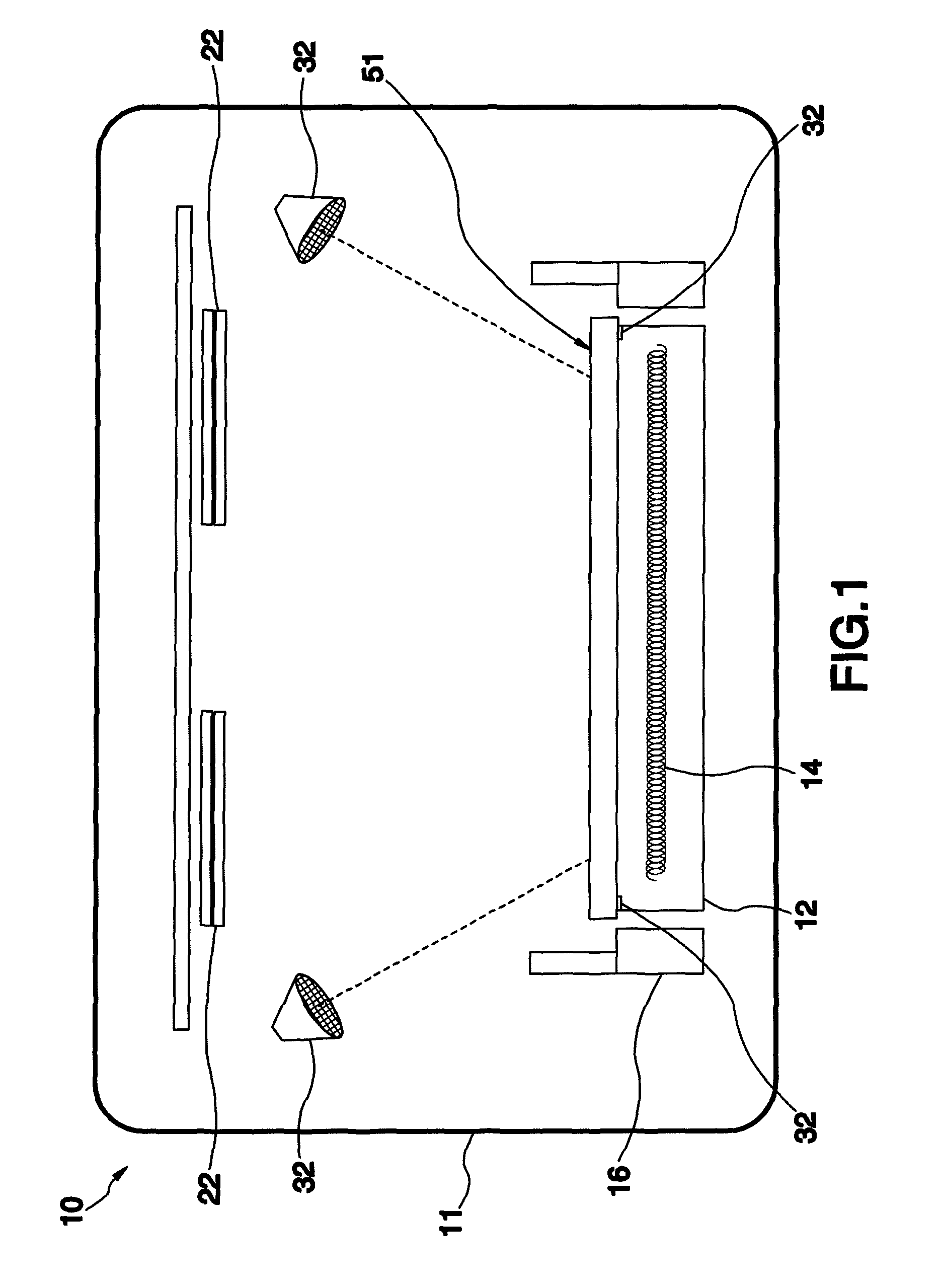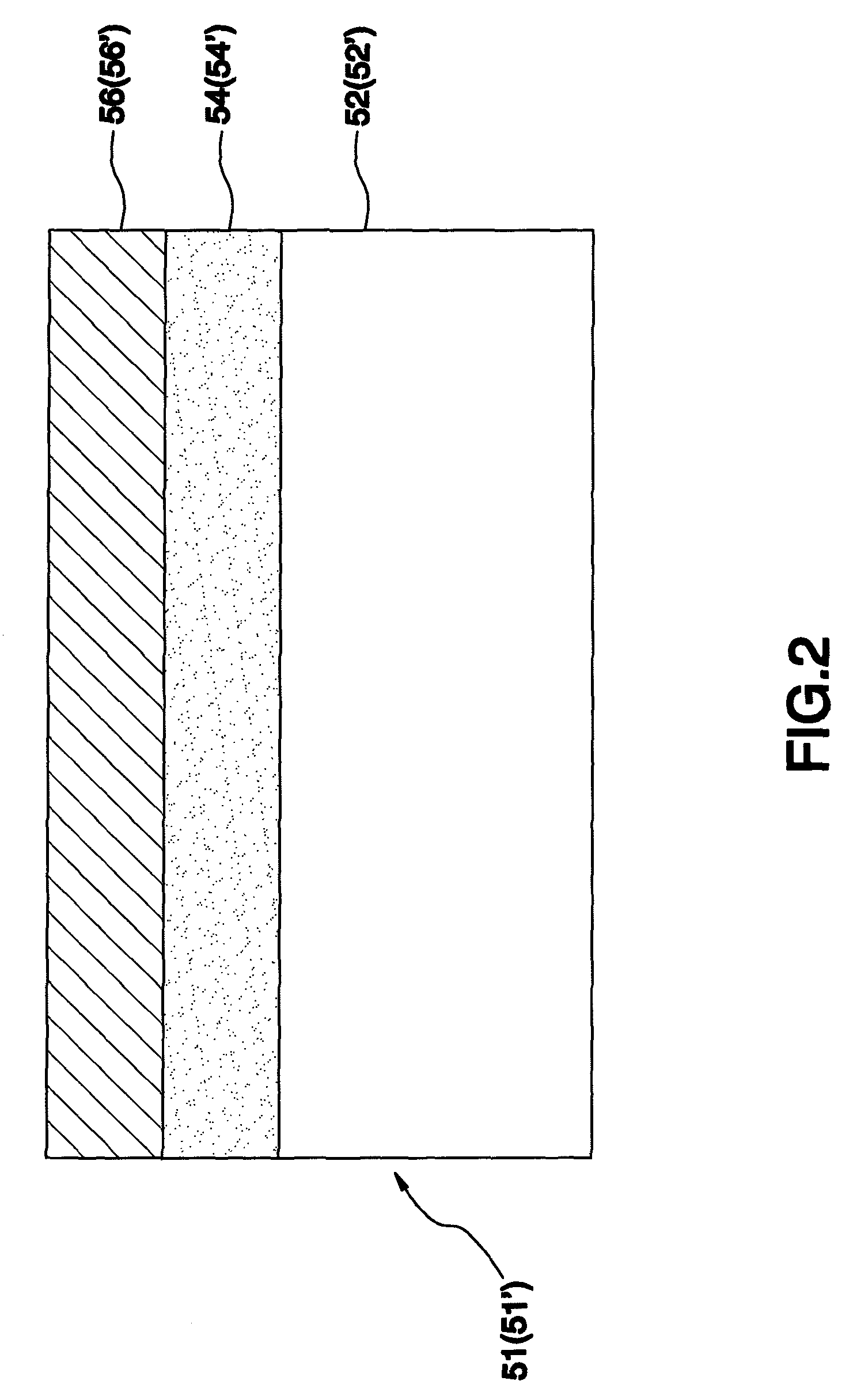RTP heating system and method
a technology of rapid temperature process and heating method, which is applied in the direction of drying, drying machines, lighting and heating apparatus, etc., can solve the problems of difficult integration so far, and achieve the effect of less direct heating
- Summary
- Abstract
- Description
- Claims
- Application Information
AI Technical Summary
Benefits of technology
Problems solved by technology
Method used
Image
Examples
second embodiment
[0030]The heating method of the second embodiment takes advantages of the characteristic that the Mo layer 54 can reflect the infrared rays to isolate and prevent most of the infrared rays from directly heating the glass substrate 52 to further heat the upper and lower surfaces of the photovoltaic-device intermediate product 51 separately.
[0031]Referring to FIG. 2 in view of FIG. 4, an RTP heating method in accordance with a third preferred embodiment of the present invention is to heat a photovoltaic-device intermediate product 51′ having a glass substrate 52′, a Mo layer 54′ coated on the glass subset 52′, and a light absorption layer 56′ in formation includes the following steps.
[0032]a) Preheat the photovoltaic-device intermediate product 51′ externally and then send it into the chamber 11′ under the condition that the photovoltaic-device intermediate product 51′ remains a predetermined temperature, 425° C. in this embodiment. Alternatively, the photovoltaic-device intermediate ...
third embodiment
[0035]In the third embodiment, in the step c), the upper surface of the photovoltaic-device intermediate product 51′ is heated up to 500° C. and higher and the lower surface of the photovoltaic-device intermediate product 51′ is thermally dissipated down to 500° C. and lower.
[0036]The heating method of the third embodiment takes advantages of the characteristic that the Mo layer 54 can reflect the infrared rays to isolate and prevent most of the infrared rays from directly heating the glass substrate 52 to further heat the upper surface of the photovoltaic-device intermediate product 51′ other than the lower surface directly. Besides, the heat of the lower surface can be dissipated through the support member, such that it will not happen that the glass substrate 52′ is softened and deformed.
[0037]In conclusion, the present invention includes the following advantages and effects.
[0038]1. The heating of different temperatures can be applied to the upper and lower surfaces of the photo...
PUM
 Login to View More
Login to View More Abstract
Description
Claims
Application Information
 Login to View More
Login to View More - Generate Ideas
- Intellectual Property
- Life Sciences
- Materials
- Tech Scout
- Unparalleled Data Quality
- Higher Quality Content
- 60% Fewer Hallucinations
Browse by: Latest US Patents, China's latest patents, Technical Efficacy Thesaurus, Application Domain, Technology Topic, Popular Technical Reports.
© 2025 PatSnap. All rights reserved.Legal|Privacy policy|Modern Slavery Act Transparency Statement|Sitemap|About US| Contact US: help@patsnap.com



